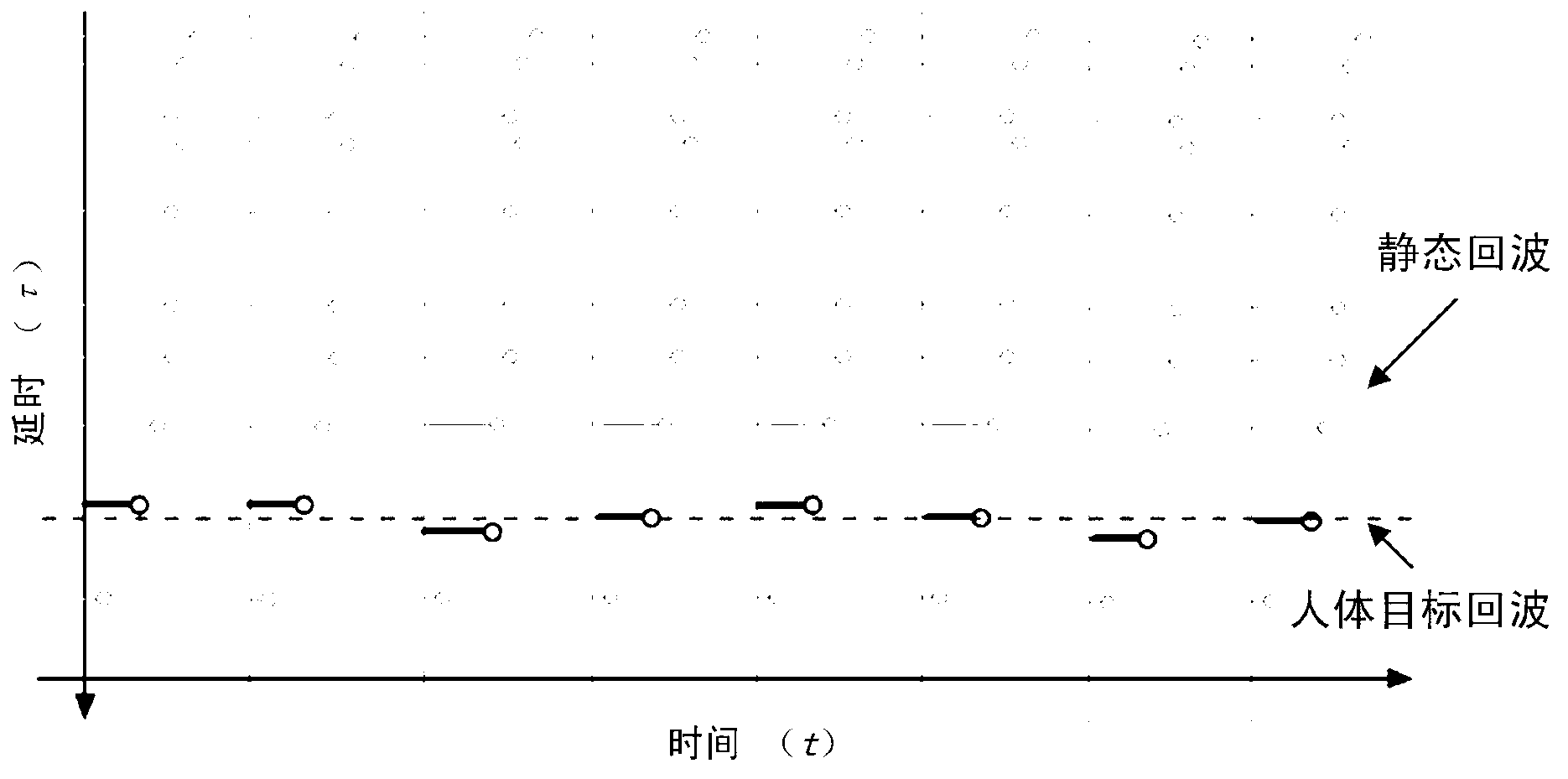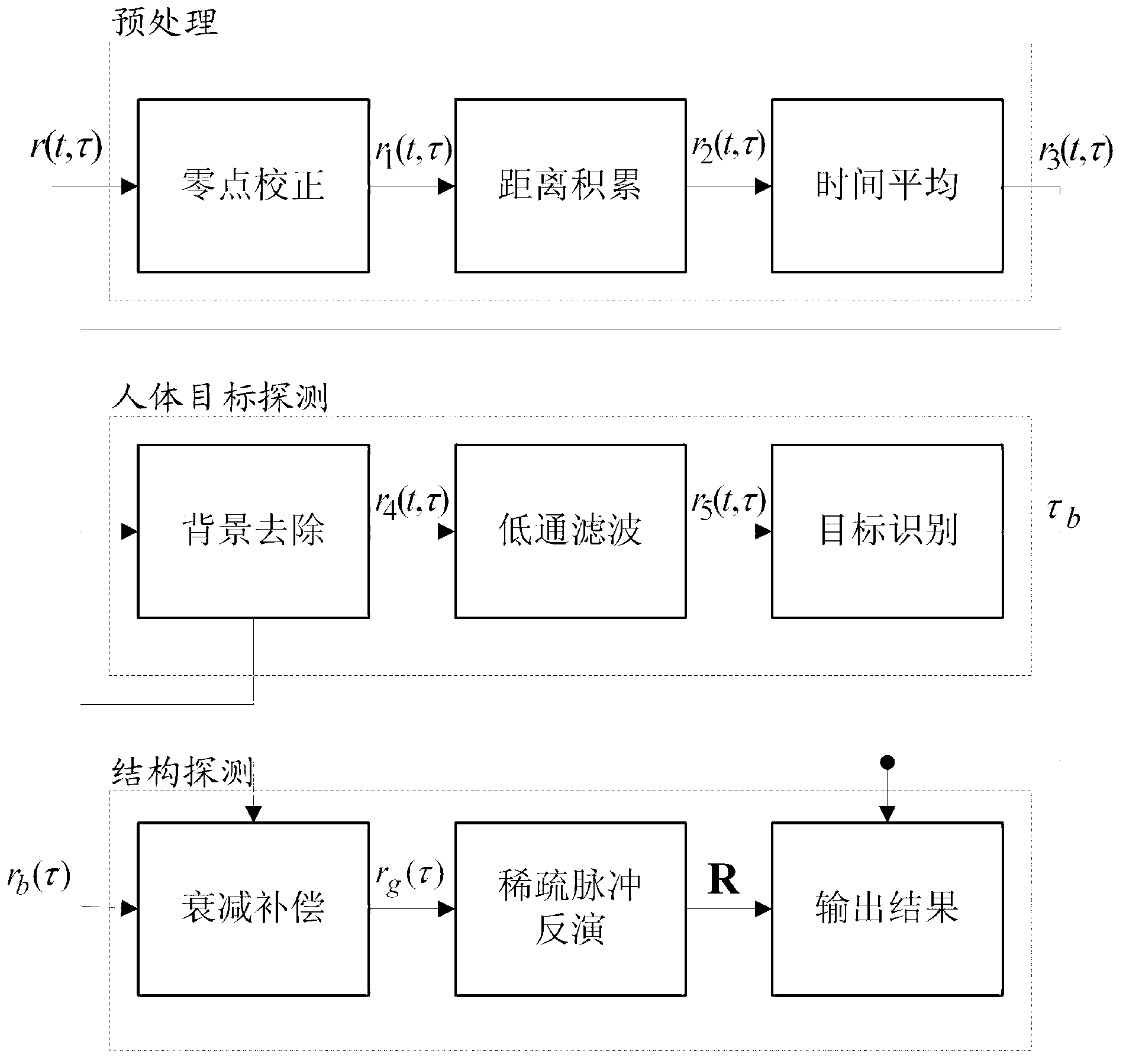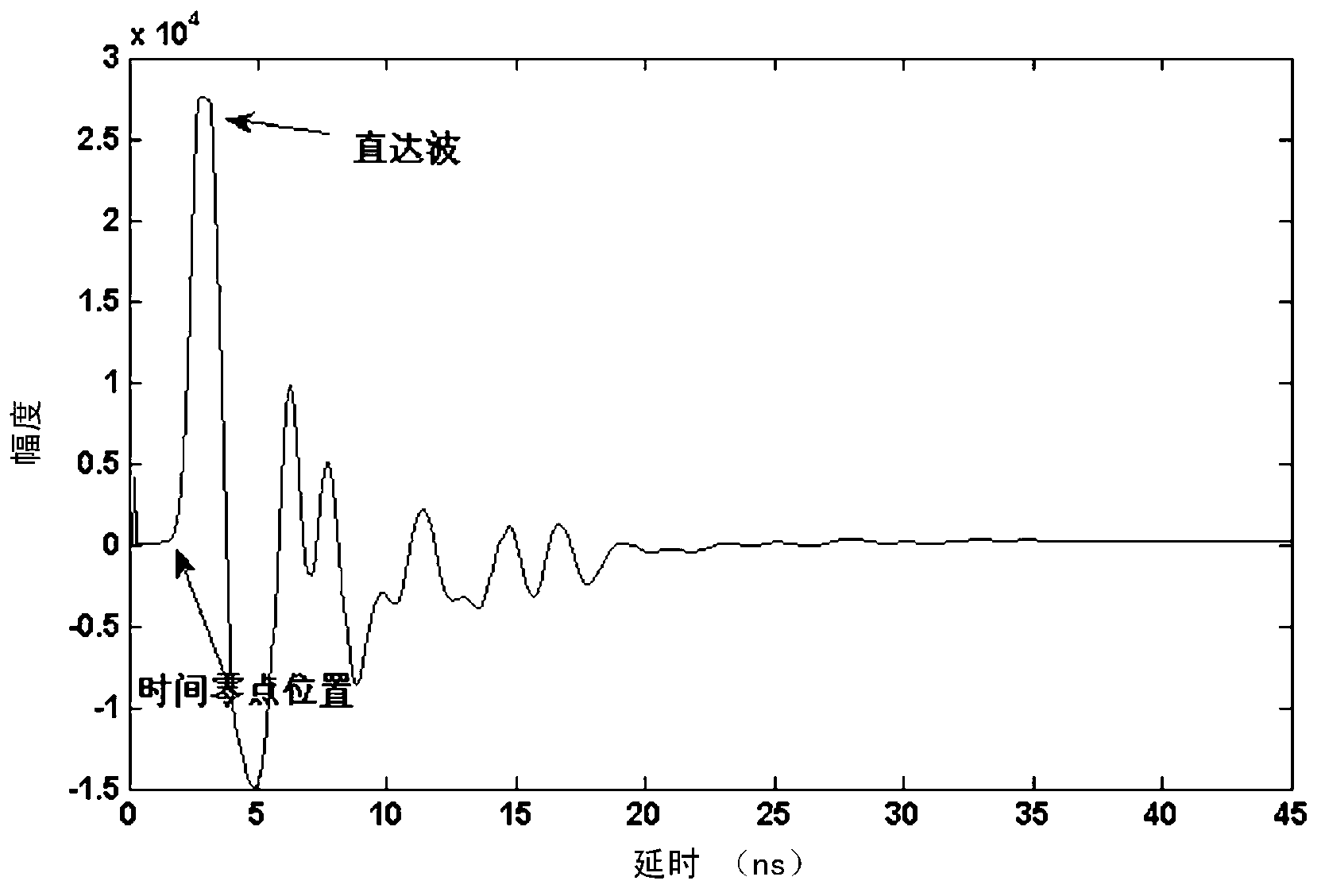Human body target and surrounding structure compatibility detecting method based on UWB (Ultra Wideband) bio-radar
A technology of human target and bio-radar, which is applied in the direction of electromagnetic wave detection, and can solve the problems that the research on the detection of the surrounding environment structure of the target has not yet been reported.
- Summary
- Abstract
- Description
- Claims
- Application Information
AI Technical Summary
Problems solved by technology
Method used
Image
Examples
Embodiment 1
[0063] This embodiment briefly explains the detection process of the UWB biological search and rescue biological radar and its echo signal model: the survivors buried under the ruins after earthquakes and other disasters are mostly buried in the holes formed under the ruins. Therefore, there is a certain space between the survivors and the ruins, and the medium in this space is air. If the height of the hole under the ruins can be determined, the thickness of the ruins can be estimated. Although this information is not yet comprehensive ruin structure information, it will effectively help rescuers formulate optimal rescue plans. Structural detection can directly use the UWB biological radar echo signal collected during human target detection for processing and extraction without re-acquisition, thereby gaining valuable time for rescue.
[0064] Such as figure 1 As shown, the UWB bioradar echo is a two-dimensional signal containing time and distance (delay) information. When...
Embodiment 2
[0070] This embodiment describes in detail the UWB biological radar echo signal processing algorithm required for compatible detection:
[0071] Such as figure 2 As shown, the algorithm includes three functional modules: preprocessing, human object detection and structure detection. The echo signal collected by the UWB biological radar is first sent to the preprocessing module for signal correction and improvement of signal-to-noise ratio. The static echo that needs to be removed in the human target detection module can be used as the input of the structure detection module, and the position of the human target detected in this module is used as a reference in the structure detection module for echo attenuation correction. The final output is the detection result including the distance information of the human target and the upper and lower interfaces of the hole.
[0072] 2.1 Preprocessing module
[0073] 1. Zero point calibration
[0074] The distance information in the...
example 3
[0120] This example verifies the effectiveness of the method described in the above example in a simulated ruin: the simulated ruin is a brick-concrete structure with a total thickness of 1.8m. There is a hole under the ruin with a height of 0.8m, and the thickness of the ruin above the hole is 1m. A normal male human target lay flat in the hole and breathed calmly. The radar was placed above the ruins to detect the location of the hole.
[0121] Figure 4 The UWB bio-radar echo signal is processed by the human target detection module, and the result of low-pass filtering is output. In the figure, obvious human breathing movement can be seen, and the recognized position of the human target is 32.52ns, which is used as a reference in the structure detection module. attenuation compensation.
[0122] Figure 5 is the input of the structure detection module, that is, the static echo estimated by the human target detection module.
[0123] Figure 6 is the UWB bio-radar echo s...
PUM
 Login to View More
Login to View More Abstract
Description
Claims
Application Information
 Login to View More
Login to View More - R&D
- Intellectual Property
- Life Sciences
- Materials
- Tech Scout
- Unparalleled Data Quality
- Higher Quality Content
- 60% Fewer Hallucinations
Browse by: Latest US Patents, China's latest patents, Technical Efficacy Thesaurus, Application Domain, Technology Topic, Popular Technical Reports.
© 2025 PatSnap. All rights reserved.Legal|Privacy policy|Modern Slavery Act Transparency Statement|Sitemap|About US| Contact US: help@patsnap.com



